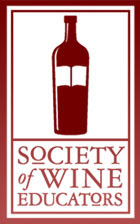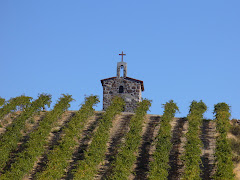 I’ve been a big fan of South African wines for a long time. A lot of folks will often ask me “why?” mainly due to the pronounced earthiness a great many of their wines impart. I’ve heard “rustic” and “earthy” and “funky” used to describe South African wines, yet there are a great many “diamonds in the rough” out there in the market today.
I’ve been a big fan of South African wines for a long time. A lot of folks will often ask me “why?” mainly due to the pronounced earthiness a great many of their wines impart. I’ve heard “rustic” and “earthy” and “funky” used to describe South African wines, yet there are a great many “diamonds in the rough” out there in the market today.Most people are surprised to hear that winemaking has existed in South Africa for over 350 years, dating back to 1659 when Dutch colonists made wines from native African grapes and began shipping it back to Holland. Within a decade, French cuttings of most likely Chenin Blanc and Muscat of Alexandria were planted, and have thrived ever since. The appellation of Constantia was even at one time, considered one of the world’s greatest wine regions. It was even said to have been Napoleon’s favorite wine during his time in exile.
In 1918, growers in the Western Cape (the predominant portion of wine production occurs here) established the KWV (Koöperatieve Wijnbouwers Vereniging van Zuid-Afrika Bpkt), an organization that sought to redefine quality standards and control production in South Africa, which ruled over winegrowers up until the end of Apratheid. Restrictions on selling the “white man’s liquor” ceased in the 1960s and the quotas enforced by the KWV ended in the 1990s. The election of Nelson Mandela and the end of Apartheid meant a new beginning for the wine industry in South Africa.
There are around 60 appellations in the W.O. (or Wine of Origin) system, which had been implemented in 1973 to established a hierarchy of regions. Wines must be 100% from grapes from a specified label. “Single vineyard” wines must be derived from an area of roughly less than 12.5 acres. There are a few confusing laws but most of the rules and laws governing the industry are comparable to our own.
The majority of wine from South Africa comes from the Western Cape, which includes the appellations Walker Bay, Robertson, Paarl, Swartland, and Stellenbosch. And while the predominant wines are white wines, there are a great deal of bold, dynamic reds coming from South Africa as well.
The primary white grape is Chenin Blanc (known as Steen locally), but other white grapes in abundance are Sauvignon Blanc, Chardonnay, Riesling (often called Rhine Riesling) and Hanepoot (Muscat of Alexandria). The primary red grapes are Cabernet Sauvignon, Merlot, Shiraz, Cinsaut (still referred to as Hermitage), and the African cross grape known as Pinotage (Pinot Noir X Hermitage).
Over the course of May, I’ll spend a great deal of time tasting through a lot of our South African wines, to highlight the many great values that are out there from this unsung region.
Stay tuned.



















 I’ve touched on Muscadet, Anjou, Saumur and Coteaux du Layon, so this post, I’ll go over Touraine, Bourgueil, Chinon and Vouvray. It’s tough encapsulating such wonderful wines from such a diverse region like the Loire, yet any more information and I may put our fair readers into systems overload.
I’ve touched on Muscadet, Anjou, Saumur and Coteaux du Layon, so this post, I’ll go over Touraine, Bourgueil, Chinon and Vouvray. It’s tough encapsulating such wonderful wines from such a diverse region like the Loire, yet any more information and I may put our fair readers into systems overload.


















